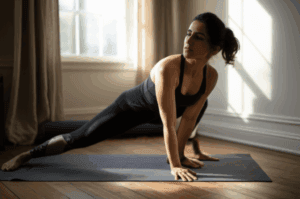Artificial intelligence is rapidly transforming various aspects of our lives, and the fitness world is no exception. From personalized workout plans to real-time feedback, AI-powered tools are becoming increasingly popular among fitness enthusiasts. But how effective and reliable are these AI fitness coaches? One writer decided to put it to the test, asking a chatbot to critique their current fitness routine. The results were surprisingly insightful and, dare we say, wholesome.
The Rise of AI Personal Trainers
The fitness industry is embracing AI at an accelerating pace. Several apps and platforms now offer AI-driven workout plans, nutritional advice, and even virtual coaching. These tools analyze user data, such as fitness level, goals, and workout history, to create customized programs. Some popular AI fitness apps include:
- Fitbod: This app creates customized workout plans based on individual goals, available equipment, and fitness level. Its machine-learning algorithms adapt the routines over time.
- FitnessAI: This iPhone app uses AI to generate personalized workouts, optimizing sets, reps, and weight for each exercise.
- GymBuddy AI: This mobile app provides customized workout plans by analyzing user data and fitness levels. It creates programs tailored for each individual, offering structured guidance and motivation.
- Trainerize: This AI-powered personal training software enables trainers to create and deliver personalized workout plans and nutrition guidance, along with progress tracking features.
- Vi Trainer: An AI-powered virtual assistant that guides users through personalized audio workouts, adapting to the user’s performance in real-time and offering feedback.
- Aaptiv: This app offers personalized workout plans and a vast content library, generating routines based on your goals and fitness level.
- BodBot: This app provides AI workouts customized to your goals, equipment, physical abilities, and desired difficulty, offering step-by-step guidance.
Benefits of Using AI in Fitness
AI-driven fitness tools offer several potential benefits:
- Personalization: AI can analyze vast amounts of data to create workout plans tailored to an individual’s specific needs and goals.
- Accessibility: AI fitness apps make personalized fitness guidance accessible to a wider audience at a lower cost than traditional personal trainers.
- Convenience: Users can access AI-powered workouts anytime, anywhere, making it easier to stay consistent with their fitness routines.
- Motivation: AI can provide real-time feedback, track progress, and offer encouragement, helping users stay motivated and engaged.
- Adaptability: AI algorithms can adapt workout plans based on user progress and feedback, ensuring continuous improvement and avoiding plateaus.
The Experiment: AI Critiques a Real Fitness Routine
To explore the potential of AI in fitness, one writer decided to have their existing workout routine assessed by an AI chatbot. The writer provided details about their current exercise schedule, including the types of workouts, frequency, intensity, and goals. They then asked the AI to provide feedback and suggestions for improvement.
The Chatbot’s Analysis
The AI chatbot began by acknowledging the writer’s efforts and highlighting the positive aspects of their routine. It praised the consistency and variety of exercises, noting that the writer was incorporating both cardio and strength training. However, the AI also identified several areas for improvement.
Progressive Overload: The AI pointed out that the writer’s routine lacked a clear focus on progressive overload. It explained that to continue seeing results, it’s essential to gradually increase the intensity or volume of workouts over time. The AI suggested implementing strategies such as increasing weight, reps, or sets in strength training exercises.
Specificity: The chatbot noted that while the writer’s routine included a variety of exercises, it wasn’t specifically tailored to their goals. It recommended focusing on exercises that directly target the muscle groups they wanted to develop. For example, if the goal is to improve lower body strength, the AI suggested incorporating more squats, lunges, and deadlifts.
Recovery: The AI emphasized the importance of adequate rest and recovery. It advised the writer to ensure they were getting enough sleep and incorporating rest days into their schedule. The chatbot also suggested exploring active recovery techniques, such as light stretching or foam rolling, to help reduce muscle soreness and improve recovery time.
Nutrition: While the writer’s query focused on their workout routine, the AI wisely pointed out the importance of nutrition in achieving fitness goals. It recommended tracking calorie intake and macronutrient ratios to ensure they were consuming enough protein, carbohydrates, and healthy fats to support their training.
A Wholesome and Encouraging Critique
What stood out most about the AI’s critique was its encouraging and supportive tone. The chatbot didn’t simply point out flaws; it offered constructive suggestions and acknowledged the writer’s efforts. It emphasized that fitness is a journey and that making small, sustainable changes can lead to significant results over time. This “wholesome” approach made the feedback more palatable and motivating.
Potential Drawbacks and Limitations
While AI fitness tools offer many benefits, it’s important to acknowledge their limitations:
- Data Dependency: AI algorithms rely heavily on data, and their accuracy depends on the quality and completeness of the information provided. If a user inputs inaccurate or incomplete data, the AI’s recommendations may be flawed.
- Lack of Personal Connection: AI cannot replace the human connection and empathy that a real personal trainer provides. Some individuals may find it difficult to stay motivated without the support and encouragement of a human coach.
- Technical Limitations: It can be difficult to input information into the AI, which can be a headache for users. For instance, one major difficulty of motion analytics is that the user must follow strict rules while filming themselves to achieve acceptable results.
- Not Suitable for Beginners: If you’re just getting started with working out or have under five years of effective experience, it’s better to follow a plan made by experts who know what they’re doing. AI may lack the personalized guidance of a well-crafted workout plan developed by experts in the field.
- Inaccurate Feedback: The real-time feedback feature of AI may not be as accurate and helpful as it could be. The app may feel more like a gym log than a virtual trainer, as it lacks the guidance and support that a personalized virtual trainer can provide.
The Future of AI in Fitness
Despite these limitations, the future of AI in fitness looks promising. As AI technology continues to evolve, we can expect to see even more sophisticated and personalized fitness tools emerge. AI may soon be able to:
- Provide Real-Time Form Correction: Using computer vision and motion sensors, AI could provide real-time feedback on exercise form, helping users avoid injuries and maximize results.
- Predict Injury Risk: AI could analyze workout data and identify patterns that indicate an increased risk of injury, allowing users to adjust their training accordingly.
- Offer Personalized Nutritional Guidance: AI could analyze dietary data and provide personalized recommendations for optimizing nutrition based on individual needs and goals.
- Integrate with Wearable Devices: AI could seamlessly integrate with wearable fitness trackers, providing a more comprehensive and personalized fitness experience.
Ethical Considerations
As AI becomes more prevalent in fitness, it’s important to consider the ethical implications. Issues such as data privacy, algorithmic bias, and the potential for job displacement in the fitness industry need to be addressed. It’s crucial to ensure that AI is used responsibly and ethically to benefit individuals and society as a whole.
Conclusion: A Helpful Tool, But Not a Replacement
The writer’s experience with an AI fitness critique highlights the potential benefits of AI in the fitness world. While AI cannot replace the expertise and personal connection of a human trainer, it can be a valuable tool for providing personalized feedback, tracking progress, and offering motivation. By embracing AI responsibly and ethically, we can unlock new possibilities for improving our health and well-being.







